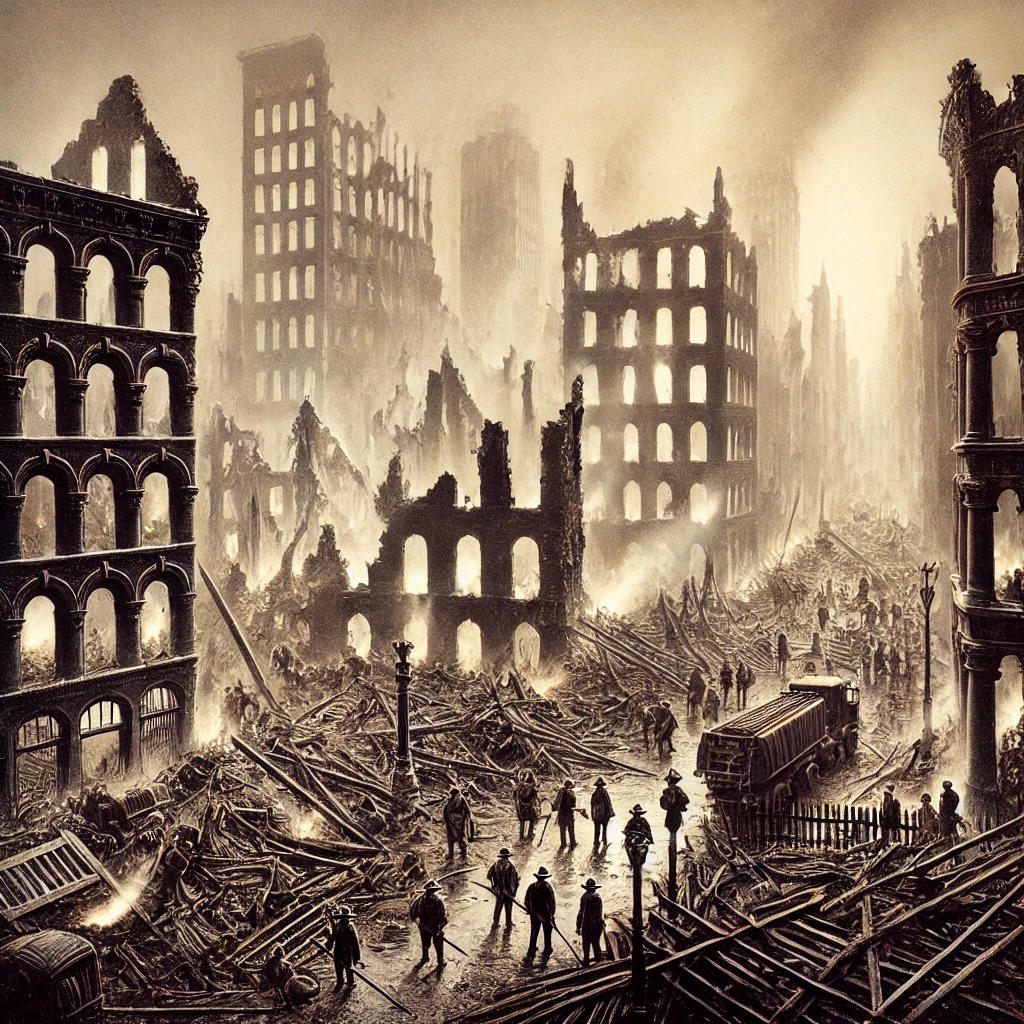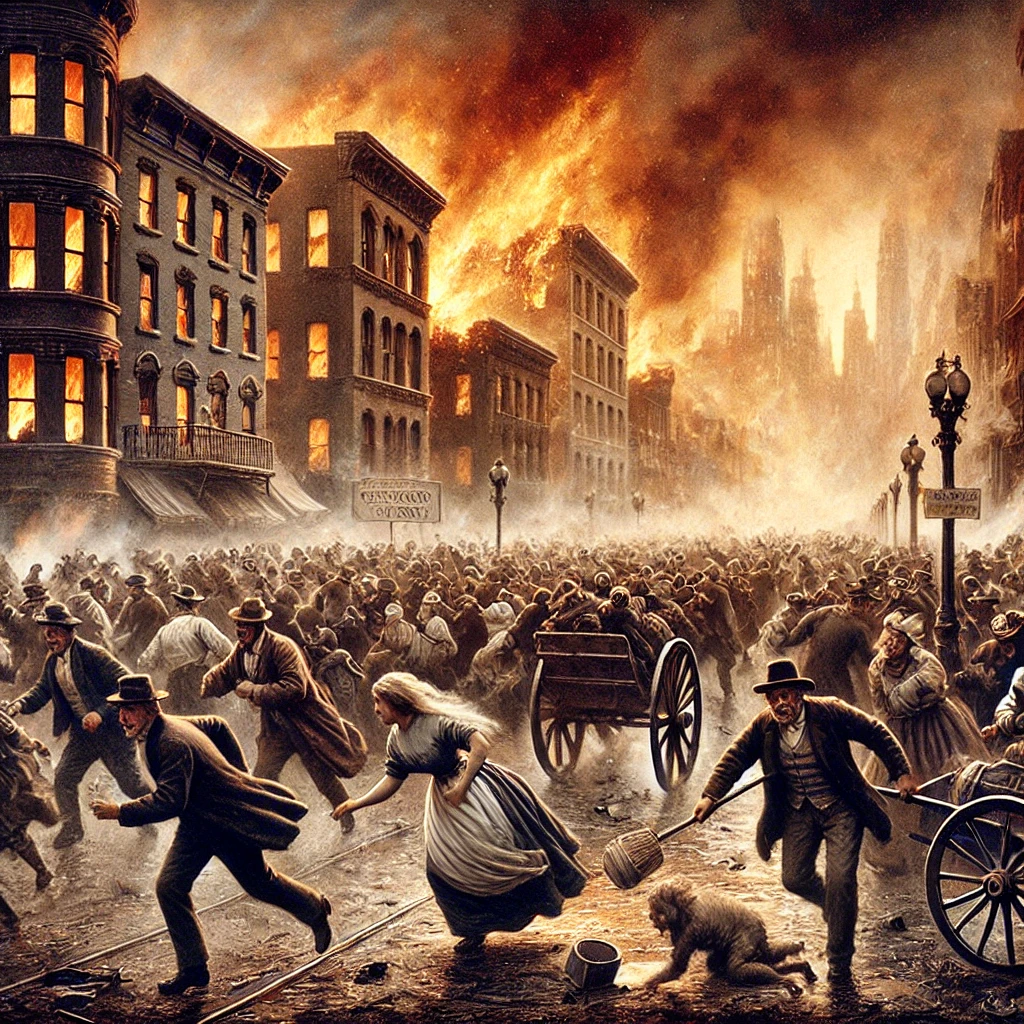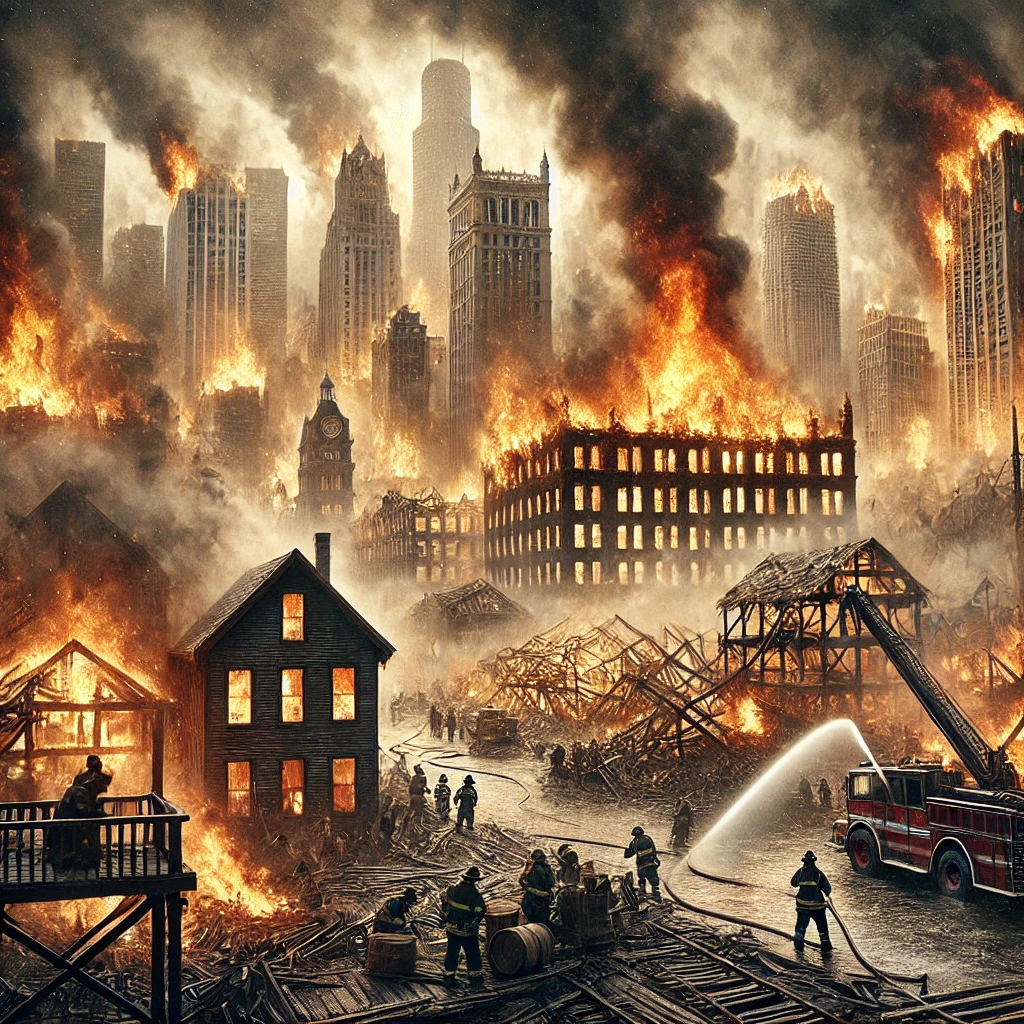On October 8, 1871, the Great Chicago Fire ignited in the barn of Patrick and Catherine O’Leary, leading to one of the most devastating urban disasters in American history. Over the course of two days, the blaze consumed large swaths of the city, ultimately killing approximately 300 people and leaving over 100,000 residents homeless. The fire not only ravaged a growing metropolis but also left an indelible mark on the city’s landscape and its future development.

The Spark of Destruction
The origins of the Great Chicago Fire remain somewhat shrouded in myth and speculation, with various accounts suggesting that the fire started when a cow kicked over a lantern in the O’Leary barn. However, the exact cause of the blaze has never been definitively determined. What is clear, however, is that several factors contributed to the fire’s rapid spread: a dry summer, wooden buildings, and strong winds combined to create the perfect storm for disaster.
As the fire quickly escalated, it consumed the dry wooden structures that made up much of Chicago’s downtown area. Firefighters struggled to contain the flames as they spread across the city, fueled by the wind and the dense construction materials. The lack of adequate firefighting resources and a poorly organized response compounded the disaster, allowing the fire to grow out of control.

A City in Flames
As the fire raged on October 8 and into the following day, it became an uncontrollable inferno, destroying entire neighborhoods and businesses. The flames swept through the city, engulfing landmarks and residences, and forcing thousands to flee for their lives. Streets were filled with panic as residents attempted to escape the advancing fire, and many sought refuge near the shore of Lake Michigan, hoping the water would provide safety.
In the wake of the disaster, Chicago’s social fabric was significantly altered. The devastation left behind by the fire created a sense of urgency among city officials and residents alike to rebuild and revitalize the city. The immediate aftermath revealed not only the tragic loss of life but also the immense economic impact, with property losses estimated at around $200 million—a staggering amount for the time.
Rebuilding and Renewal
The aftermath of the Great Chicago Fire presented an opportunity for the city to rebuild better and stronger. In the years following the fire, Chicago underwent a transformation marked by innovative architectural designs and urban planning. The city embraced fire-resistant building materials, leading to the construction of modern skyscrapers and a new urban landscape that reflected the resilience and ambition of its residents. The rebuilding process also led to significant changes in fire safety regulations and emergency response systems, ensuring that the lessons learned from the disaster would help prevent such a catastrophe from happening again. The city’s growth and modernization in the wake of the fire positioned Chicago as a leading urban center in the United States.

A Lasting Legacy
The Great Chicago Fire remains etched in the city’s history, symbolizing both destruction and resilience. It prompted a wave of cultural and social changes, fostering a sense of community among survivors and leading to the establishment of organizations dedicated to disaster relief and recovery. The fire also gave rise to a greater awareness of urban planning and fire safety, influencing policies and practices in cities across the nation. Today, the legacy of the Great Chicago Fire is remembered through various memorials and historical sites. The event serves as a poignant reminder of the fragility of urban life and the importance of preparedness in the face of natural disasters. Chicagoans honor the memory of those lost in the fire while celebrating the city’s remarkable resurgence.
The Great Chicago Fire, which began on October 8, 1871, was a catastrophic event that reshaped the city of Chicago and left an indelible mark on American history. The blaze not only devastated a burgeoning metropolis but also provided an opportunity for renewal and transformation. As we reflect on this pivotal moment, we recognize the resilience of communities and the enduring lessons learned from tragedy, reminding us of the importance of preparedness, safety, and the human spirit in overcoming adversity.
